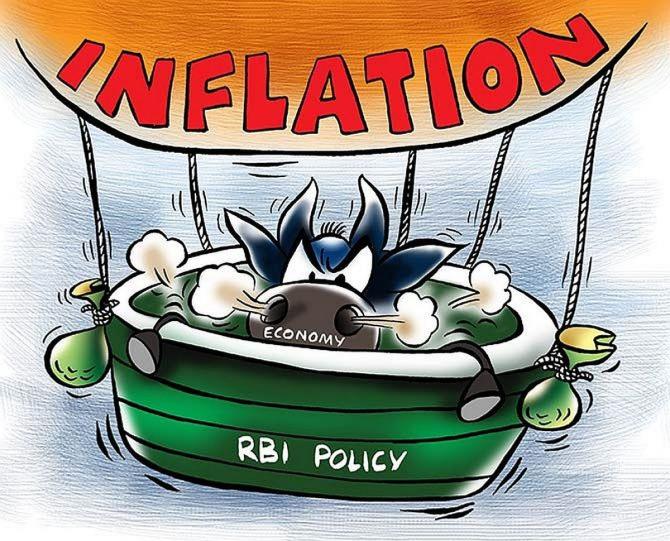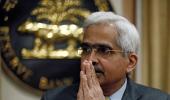The Reserve Bank of India on Friday raised the retail inflation forecast for 2021-22 to 5.7 per cent due to supply side constraints, high crude oil and raw materials cost.

The RBI in June had pegged the retail inflation estimate at 5.1 per cent for the current financial year.
The RBI has the mandate to keep inflation in a band of 2-4 per cent, with a tolerance level of 2 per cent on either side.
"The current assessment is that the inflationary pressures during Q1:2021-22 are largely driven by adverse supply shocks which are expected to be transitory," RBI Governor Shaktikanta Das said while announcing the outcome of the Monetary Policy Committee (MPC) meeting.
The Reserve Bank of India (RBI) has decided to keep the repo rate -- at which it lends short-term money to banks -- unchanged at 4 per cent but maintained an accommodative stance as the economy is yet to recover from the impact of the second COVID wave.
"Inflation may remain close to the upper tolerance band for the second quarter of 2020-21.
"But this pressure should ebb in the third quarter of 2021-22 on account of kharif harvest arrivals and supply side measures," Das said.
He said a "pre-emptive monetary policy response" at this stage may kill the nascent and hesitant recovery (of the economy) that is trying to secure a foothold in the extremely difficult conditions.
"Taking into consideration all these factors, CPI inflation is now projected at 5.7 per cent during 2021-22: 5.9 per cent in Q2; 5.3 per cent in Q3; and 5.8 per cent in Q4 of 2021-22, with risks broadly balanced. CPI inflation for Q1:2022-23 is projected at 5.1 per cent," he said.
The retail inflation in June rose to 6.3 per cent mainly because of uptick in prices of edible oils, pulses, eggs, milk and prepared meals as well as rise in vegetable prices.
Input prices are rising across manufacturing and services sectors, but weak demand and efforts towards cost cutting are tempering the pass-through to output prices, the RBI Governor said.
Das said there has been a considerable hardening of commodity prices, particularly crude oil.
However, price pressures have witnessed a transient softening from the peak in July post the agreement amongst the oil producing OPEC plus nations to bring back production to pre-pandemic levels by September 2022.
Going forward, the revival of south-west monsoon and the pick-up in kharif sowing, buffeted by adequate food stocks should help control prices of cereals.
Prices of edible oil and pulses have softened in July due to supply side interventions by the government, he added.
While the government has taken certain steps to ease supply constraints, concerted efforts in this direction are necessary to restore supply-demand balance, Das said.
"With crude oil prices at elevated levels, a calibrated reduction of the indirect tax component of pump prices by the Centre and states can help to substantially lessen cost pressures," Das said.
He said the RBI is closely monitoring the inflationary pressures and the MPC is conscious of its objective of anchoring inflation expectations.












 © 2025
© 2025